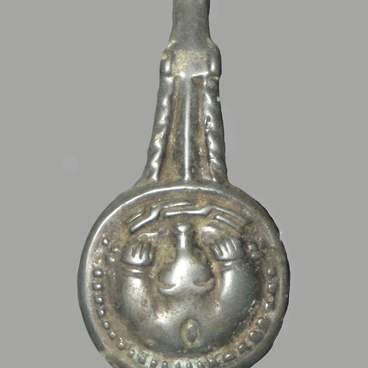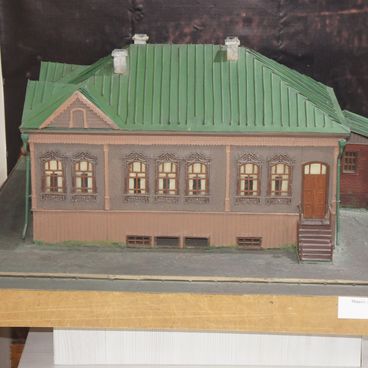This cooking samovar consists of a body in the form of a smooth wall bowl with a waist at the top. Three shape-cut legs are attached directly to the ash-pan. The ash-pan has round cut-outs. Handles have wooden holders. The inside is divided by two partitions into two separate compartments. One surviving part of the cover has a metal grip leg.
This type of samovars is the precursor of the ‘classic type’ samovars. Cooking samovar was intended for cooking both liquids (water) and other meals.
Most of the samovars kept in the country’s museums date back to the end of the 19th and beginning of the 20th century. It was during that period that the largest-scale production of samovars was observed in Russia. Samovars were made all over the country, but the highest-volume production was launched in Tula, so it was not for nothing that it was called the samovar capital. Such famous masters as Batashevs, Shemarins and many others worked in Tula.
The principle of operation of the classic charcoal-burning samovar is very simple and at the same time very effective. Smoldering charcoal is placed into the pipe. It keeps burning in the incoming air stream. The air in the pipe heats up and rises through the flame tube, giving off heat and heating up the water in the bowl.
Charcoal can burn well if there is draught, which is the case with the pipe of the samovar. The draught is caused by the fact that the air in the lower part of the tube is hot from coal and at the top it is cold. In order to additionally move the air in the samovar pipe, the pipe would be blown from above with a boot in old times. After the charcoal fires up, the boot would be removed. The air flows through the grid at the bottom, moving upwards and forming a draught in the pipe. In village houses, sometimes a samovar pipe was connected to a chimney to increase draught.
When the water in the samovar reaches boiling point, a tea kettle is placed on top of the samovar. As a result, the draught becomes smaller and the water boils slowly, the teapot is heated slowly and the tea is brewed.
Samovar in its classical form has become an integral symbol of Russian culture and still acts as such a marker, despite all the technical changes.
This type of samovars is the precursor of the ‘classic type’ samovars. Cooking samovar was intended for cooking both liquids (water) and other meals.
Most of the samovars kept in the country’s museums date back to the end of the 19th and beginning of the 20th century. It was during that period that the largest-scale production of samovars was observed in Russia. Samovars were made all over the country, but the highest-volume production was launched in Tula, so it was not for nothing that it was called the samovar capital. Such famous masters as Batashevs, Shemarins and many others worked in Tula.
The principle of operation of the classic charcoal-burning samovar is very simple and at the same time very effective. Smoldering charcoal is placed into the pipe. It keeps burning in the incoming air stream. The air in the pipe heats up and rises through the flame tube, giving off heat and heating up the water in the bowl.
Charcoal can burn well if there is draught, which is the case with the pipe of the samovar. The draught is caused by the fact that the air in the lower part of the tube is hot from coal and at the top it is cold. In order to additionally move the air in the samovar pipe, the pipe would be blown from above with a boot in old times. After the charcoal fires up, the boot would be removed. The air flows through the grid at the bottom, moving upwards and forming a draught in the pipe. In village houses, sometimes a samovar pipe was connected to a chimney to increase draught.
When the water in the samovar reaches boiling point, a tea kettle is placed on top of the samovar. As a result, the draught becomes smaller and the water boils slowly, the teapot is heated slowly and the tea is brewed.
Samovar in its classical form has become an integral symbol of Russian culture and still acts as such a marker, despite all the technical changes.


